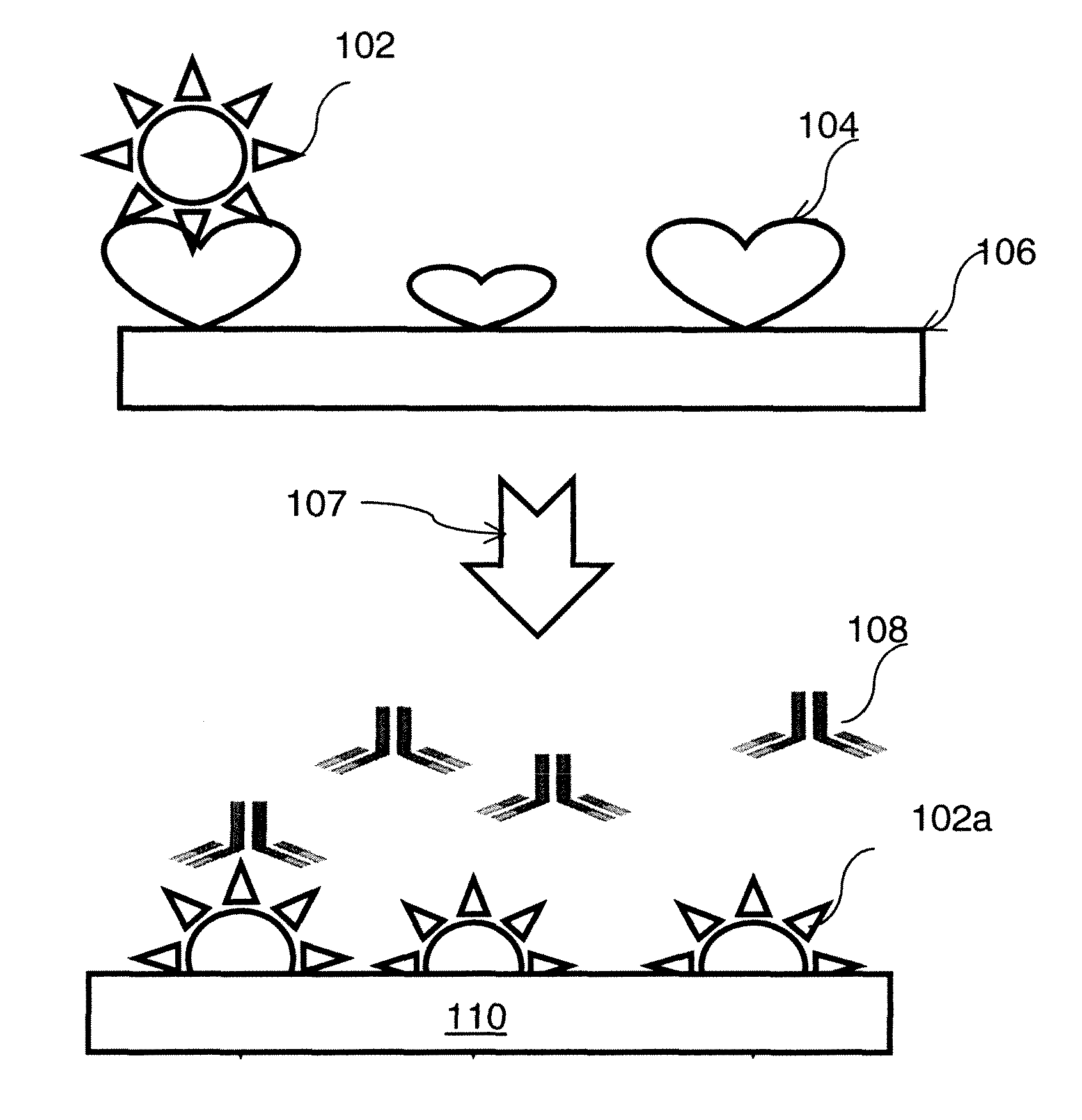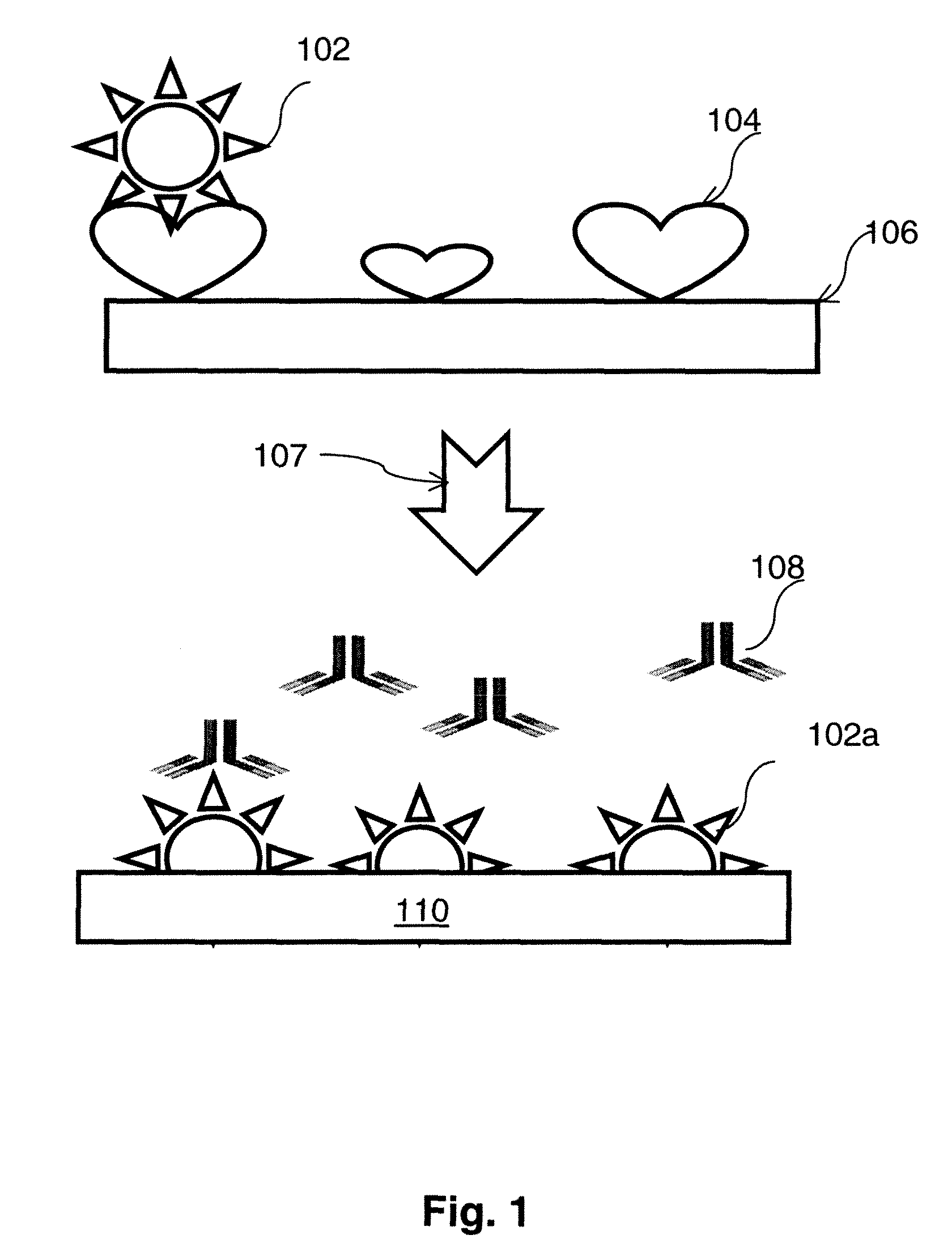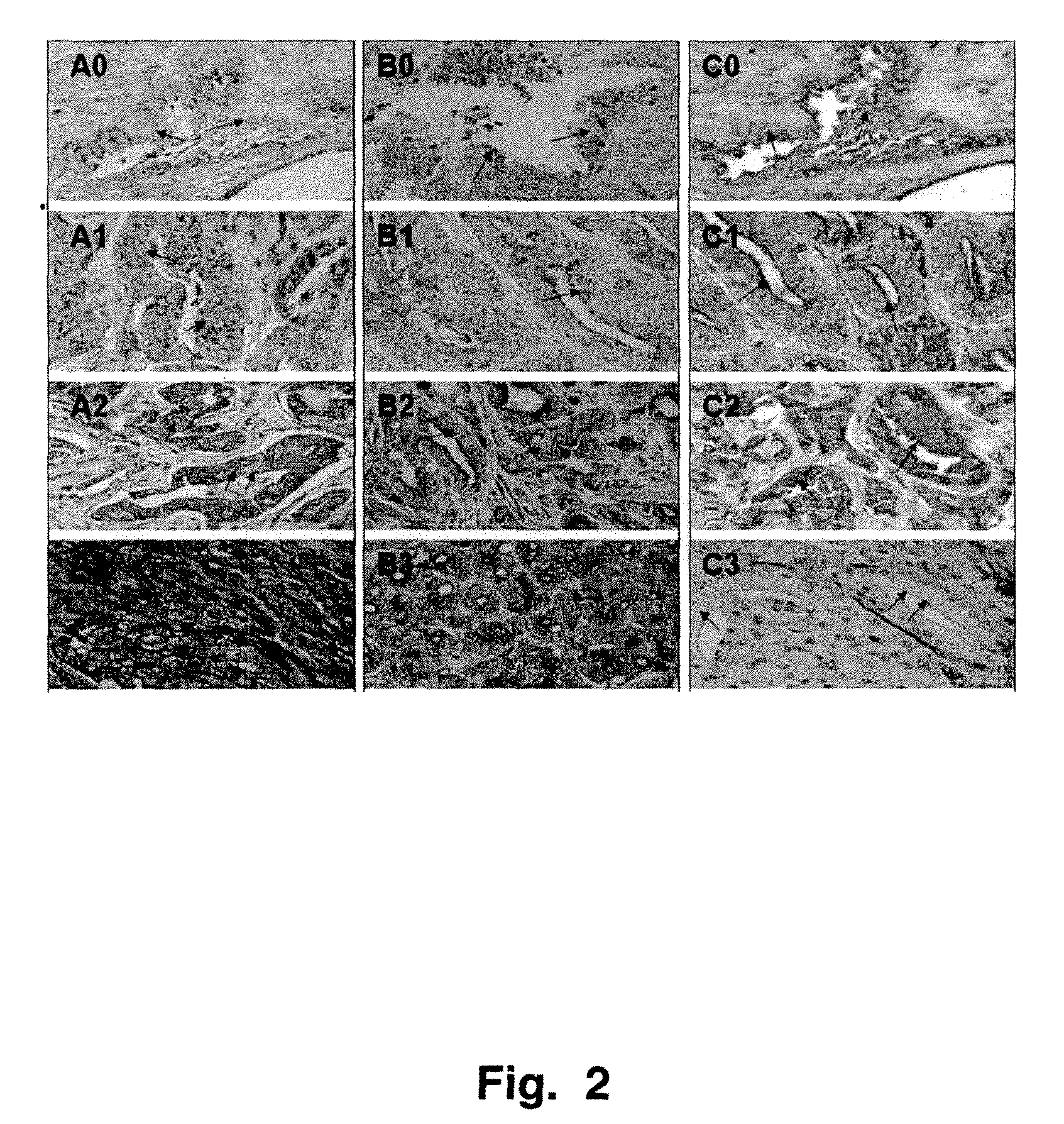Prostate cancer glycan markers and autoantibody signatures
a prostate cancer and autoantibody technology, applied in the field of prostate cancer glycan biomarkers and serum antiglycan antibody signatures, can solve the problems of not being able to accurately identify neither serum psa levels nor biopsies correctly reveal the volume or grade of prostate cancer, and investigators rarely distinguish between the expression of prostate cancer versus pz (peripheral), and achieve the effect of higher binding
- Summary
- Abstract
- Description
- Claims
- Application Information
AI Technical Summary
Problems solved by technology
Method used
Image
Examples
example 1
Tissue Microarray for a Comparative Analysis of Glyco-Epitope Expression Among Prostate Cancers of Different Gleason Grades
[0077]Recent establishment of tissue array technology provides a powerful means to further explore the application of immunological probes, i.e., the well-characterized anti-carbohydrate antibodies and lectins, in identification of prostate-cancer-associated / specific carbohydrate moieties. This technology allows simultaneous detection of glycan-expression by an array of tissues spotted on glass-slides. This facilitates comparative measurement of the expression levels of glyco-epitopes among different grades of prostate cancers and control tissues.
[0078]Three lectins of known specificities were used to detect expression of various N-glycan types among prostate adenocarcinomas of different Gleason grades. These are: 1) Sambucus nigra I agglutinin (SNA-I), recognizing α2-6 linked Neu5Ac residues; 2) Phaseolus vulgaris-L (PHA-L), specific for Tri-II and m-II cluster...
example 2
Use of Lectin Arrays to Detect Glyco-Epitopes
[0090]Referring now to FIGS. 7-9, these representations of a lectin array illustrate results of different binding to lectins of prostate membrane fractions from different types of prostate cells. The glyco-epitopes exhibited differential amounts of binding to the array, and were visualized by protein-Cy3 conjugates. As is known in the art, Cy3 is an orange fluorescing cyanine dye which can be obtained commercially in a form for linking to compounds containing free amino groups. In the original photographs, different colors (not shown) indicate different degrees of binding. In the present work, 0.1 microgram of a protein-Cy3 conjugate obtained from a membrane fraction of the indicated tissue type was added to each lectin array. The results are from lectin array detection of glyco-epitopes in prostate primary cultures. In FIGS. 8 and 9 are shown array images (FIG. 8, precancerous prostate; FIG. 9, normal prostate). The boxes in the figure i...
example 3
An Array of Glycans for Detection of Auto-Antibodies
[0097]Images of a glycoprotein array which was tested with various lectins to validate the prostate cancer associated EEL epitope can be seen FIG. 12 and FIG. 13. One can observe that the EEL lectin (FIG. 13) provides different results as between the PrCa (prostate cancer) associated epitopes and the BPH epitopes, whereas the ConA lectin, which recognizes α-linked mannose and terminal glucose residues, does not. It can also be seen that the Man9 is bound specifically by the ConA but not the EEL. Binding of ConA to the Man9 clusters is indicated at 120. In FIG. 13, at 130, it can be seen that the LNCaP are positive in binding to EEL. The LNCaP cell line was established from a metastatic lesion of human prostatic adenocarcinoma. See, Horoszewicz et al., “LNCaP model of human prostatic carcinoma,”Cancer Res. April 1983; 43(4):1809-18. Similarly, membrane preparation of PrCa (prostate cancer tissue) shows strong positive.
Carbohydrate M...
PUM
| Property | Measurement | Unit |
|---|---|---|
| pH | aaaaa | aaaaa |
| core structure | aaaaa | aaaaa |
| volume | aaaaa | aaaaa |
Abstract
Description
Claims
Application Information
 Login to View More
Login to View More - R&D
- Intellectual Property
- Life Sciences
- Materials
- Tech Scout
- Unparalleled Data Quality
- Higher Quality Content
- 60% Fewer Hallucinations
Browse by: Latest US Patents, China's latest patents, Technical Efficacy Thesaurus, Application Domain, Technology Topic, Popular Technical Reports.
© 2025 PatSnap. All rights reserved.Legal|Privacy policy|Modern Slavery Act Transparency Statement|Sitemap|About US| Contact US: help@patsnap.com



